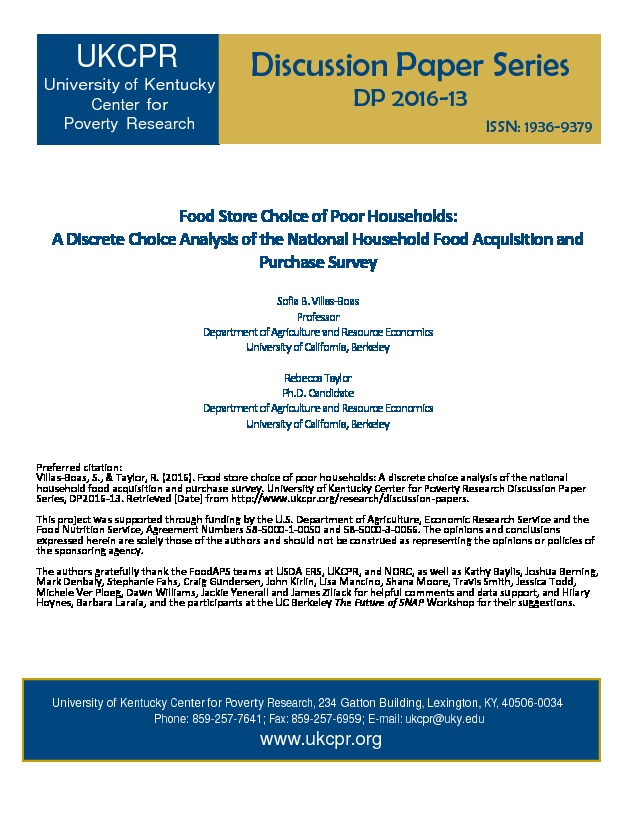Policymakers are pursing initiatives to increase food access for low-income households. However, due in part to previous data deficiencies, there is still little evidence supporting the assumption that improved food store access will alter dietary habits, especially for the poorest of U.S. households. This article uses the new National Household Food Acquisition and Purchase Survey (FoodAPS) to estimate consumer food outlet choices as a function of outlet type and household attributes in a multinomial mixed logit. In particular, we allow for the composition of the local retail food environment to play a role in explaining household store choice decisions and food acquisition patterns. We find that (1) households are willing to pay more per week in distance traveled to shop at superstores, supermarkets, and fast food outlets than at farmers markets and smaller grocery stores, and (2) willingness to pay is heterogeneous across income group, Supplemental Nutrition Assistance Program (SNAP) participation, and other household and food environment characteristics. Our results imply that policymakers should consider incentivizing the building of certain outlet types over others, and that Healthy Food Financing Initiatives should be designed to fit the sociodemographic composition of each identified low-income, low-access area in question.
Research
FoodAPSPDF Thumbnail
